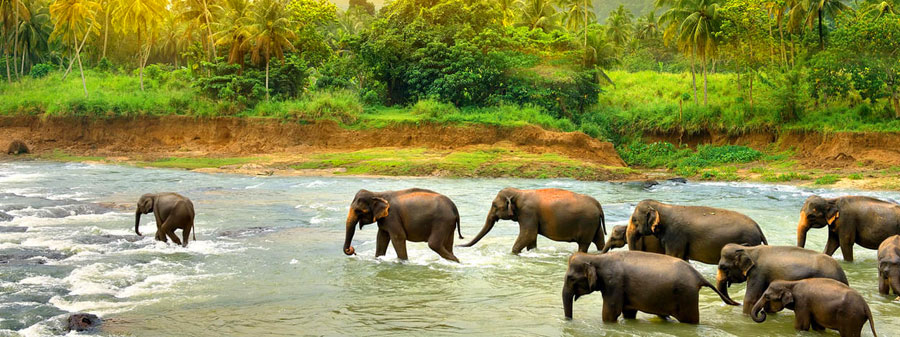Discovering the Rich Heritage of Nagarahole: Where Nature and History Converge
Aditi Paul [14/Oct/23]Nagarahole National Park, located in the southern state of Karnataka, India, is not just a sanctuary for incredible wildlife; it's also a repository of rich history and cultural heritage. Often referred to as the "Rajiv Gandhi National Park," this lush expanse of wilderness provides a fascinating blend of nature and historical significance.

1. A Wildlife Paradise:Before delving into its heritage, it's essential to acknowledge what makes Nagarahole special - its incredible biodiversity. The park, part of the Nilgiri Biosphere Reserve, is home to a vast array of fauna, including the majestic Bengal tiger, elusive leopards, herds of Indian elephants, and a profusion of bird species. The park's name, Nagarahole, even means "snake river," paying homage to its serpentine waterways that sustain the flora and fauna.
2. Historical Significance: Nagarahole's heritage dates back to the days of the Wodeyar dynasty, the erstwhile rulers of the Kingdom of Mysore. These kings were known for their profound respect for nature and wildlife, and they declared Nagarahole a protected area as early as 1870. This royal patronage played a significant role in preserving the park's natural beauty.
3. Local Tribes: One cannot explore the heritage of Nagarahole without acknowledging the indigenous people who have inhabited these forests for centuries. The Soligas, JenuKurubas, and other tribal communities have deep-rooted connections to this land. Their traditional knowledge of the forests, their medicinal uses, and their unique ways of life are integral to the heritage of Nagarahole.
4. Colonial Connections: During the British colonial era, the forests of Nagarahole were an exclusive hunting ground for the British elite. The park's history is peppered with stories of grand safaris and encounters with the formidable Indian wildlife. These colonial remnants and stories contribute to the historical tapestry of the park.
5. Eco-tourism and Conservation Efforts: In recent years, Nagarahole has transitioned into a hub for eco-tourism and wildlife conservation. The forest department, along with various NGOs and local communities, plays an essential role in safeguarding the park's natural treasures. By promoting responsible tourism, Nagarahole showcases the harmonious coexistence of nature and humans.
6. The Ethereal Kabini River: One of the most iconic features of Nagarahole is the Kabini River, which flows through the park. Its clear waters, flanked by lush forests, provide a serene backdrop for wildlife sightings. Tourists often take boat safaris along the Kabini, where they might spot sunbathing crocodiles, basking otters, and diverse birdlife.
7. Nature-inspired Tourism: In Nagarahole, eco-tourism initiatives are booming. Travelers can choose from an array of experiences, such as Jeep Safari in Nagarahole guided nature walks, and birdwatching excursions. The park's unique topography allows for varied landscapes, from dense jungles to open meadows, each offering distinct wildlife encounters.
8. The Roar of the Tigers:One of the most thrilling experiences in Nagarahole is spotting the Bengal tigers that roam its forests. These apex predators are essential to the park's ecosystem. It's a heart-pounding moment to witness their regal presence, a sight that reminds us of the importance of preserving such habitats.
9. The Avian Wonderland:For bird enthusiasts, Nagarahole is a paradise. The park hosts over 270 species of birds, including the Malabar Trogon, Indian Pitta, and Great Hornbill. The harmonious melodies of these avian wonders create a symphony in the forest.
10. Conservation Initiatives:The park actively participates in various wildlife conservation programs. These efforts include anti-poaching measures, habitat restoration, and community involvement. Nagarahole serves as an example of how responsible tourism can contribute to the preservation of natural heritage.
11. A Glimpse into Local Life:When exploring Nagarahole, visitors have the opportunity to engage with the local communities, learn about their traditional practices, and perhaps even witness their exquisite art and crafts, which reflect their deep connection to the land.
Conclusion: Nagarahole National Park is a sanctuary where history, culture, and nature intertwine. It's a testament to how humans, wildlife, and the land can coexist harmoniously when efforts are made to conserve our natural heritage. As you explore Nagarahole's wildlife and immerse yourself in its cultural tapestry, you'll gain a deeper appreciation for the significance of this extraordinary place.

